I don’t do rules very well. But I’ve got a couple of my own that come pretty close to inviolable.
Don’t clean your sensor with your tongue is one such great rule. Very practical.
In Bosnia, I was once given a large jar of honey that I thought would be better protected in my camera bag than anywhere else (I was photographing a beekeeper who later drunkified me with his homemade slivovitz, which accounts for what happened next). After the bag fell to the ground and I spent an evening in a hot shower cleaning a litre of honey from it and all the gear contained therein, I instituted a new rule: no glass jars filled with honey are to be placed in my bag, no matter how good the reason, or how drunk I might be. I’m religious about this one.
More practically, I have a rule about motion and movement in my photographs. Specifically this: if there’s movement, I want to see it. I want to feel it.
Are there exceptions? Of course. But that rule forces me to at least play with the possibilities that a slower shutter and a moving subject can give me.
Shoot what it feels like, not what it looks like, right? We can show how motion feels in a photograph, even if it doesn’t “look like that” to the naked eye. (An aside: why do we say the “naked eye”? As opposed to the well-dressed eye? The eye that’s partly, but not immodestly, clad? I digress.) If there is motion, I want to feel it. Here are some of the things going through my head when trying to incorporate a sense of motion in my photographs.
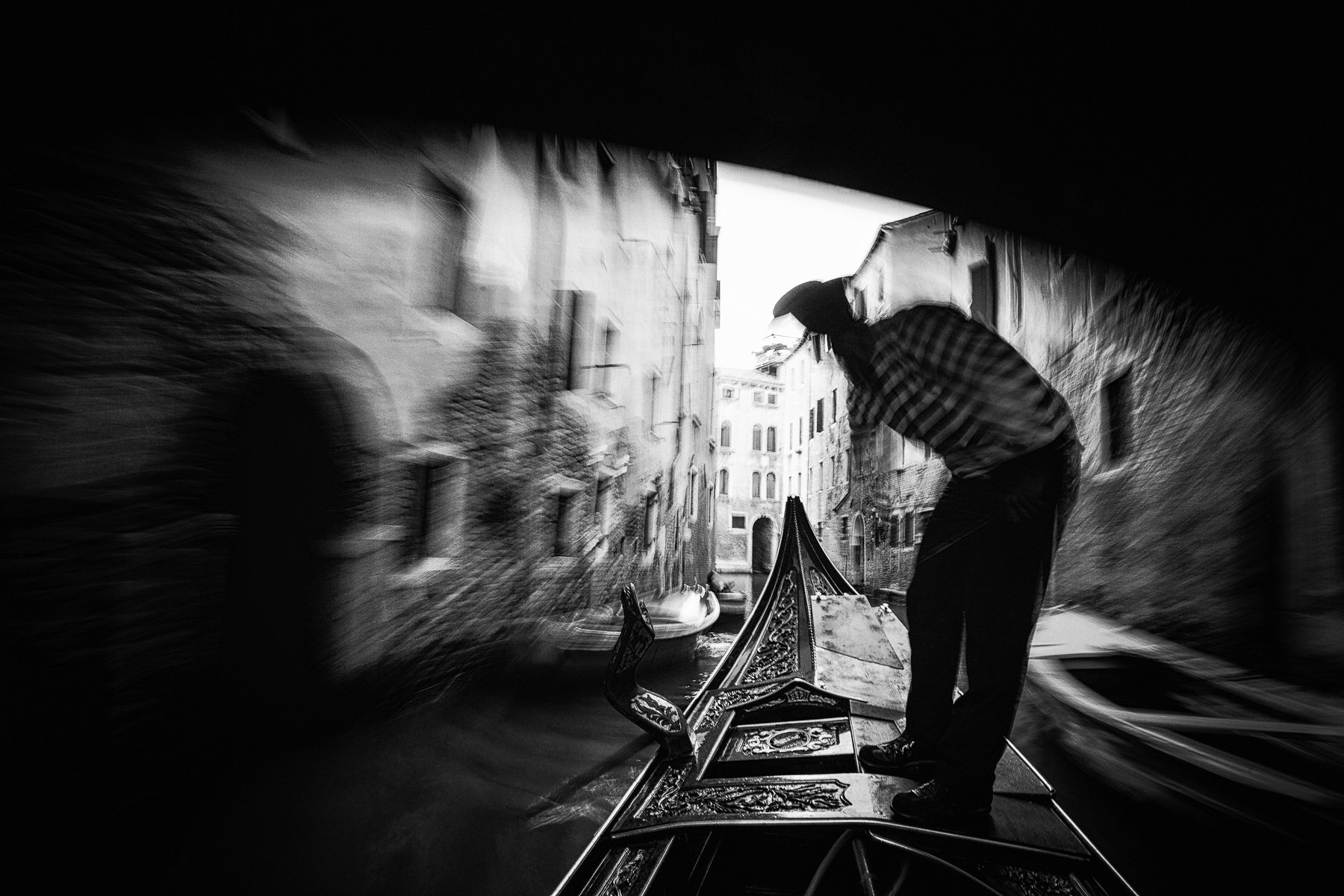
One. For the newer photographers, know that you learn how to put motion into a photograph purely through trial and error. There is no secret. Different subjects move at different speeds, which means there is no one ideal shutter speed for capturing the feeling of movement. What works for someone walking (perhaps 1/8 second) will be way too slow for someone running (maybe 1/30 second), so you’ve got to develop a bit of a feel for it. Don’t be discouraged if it takes some time to nail it. This is often what is called a high failure rate activity. Embrace the chaos.
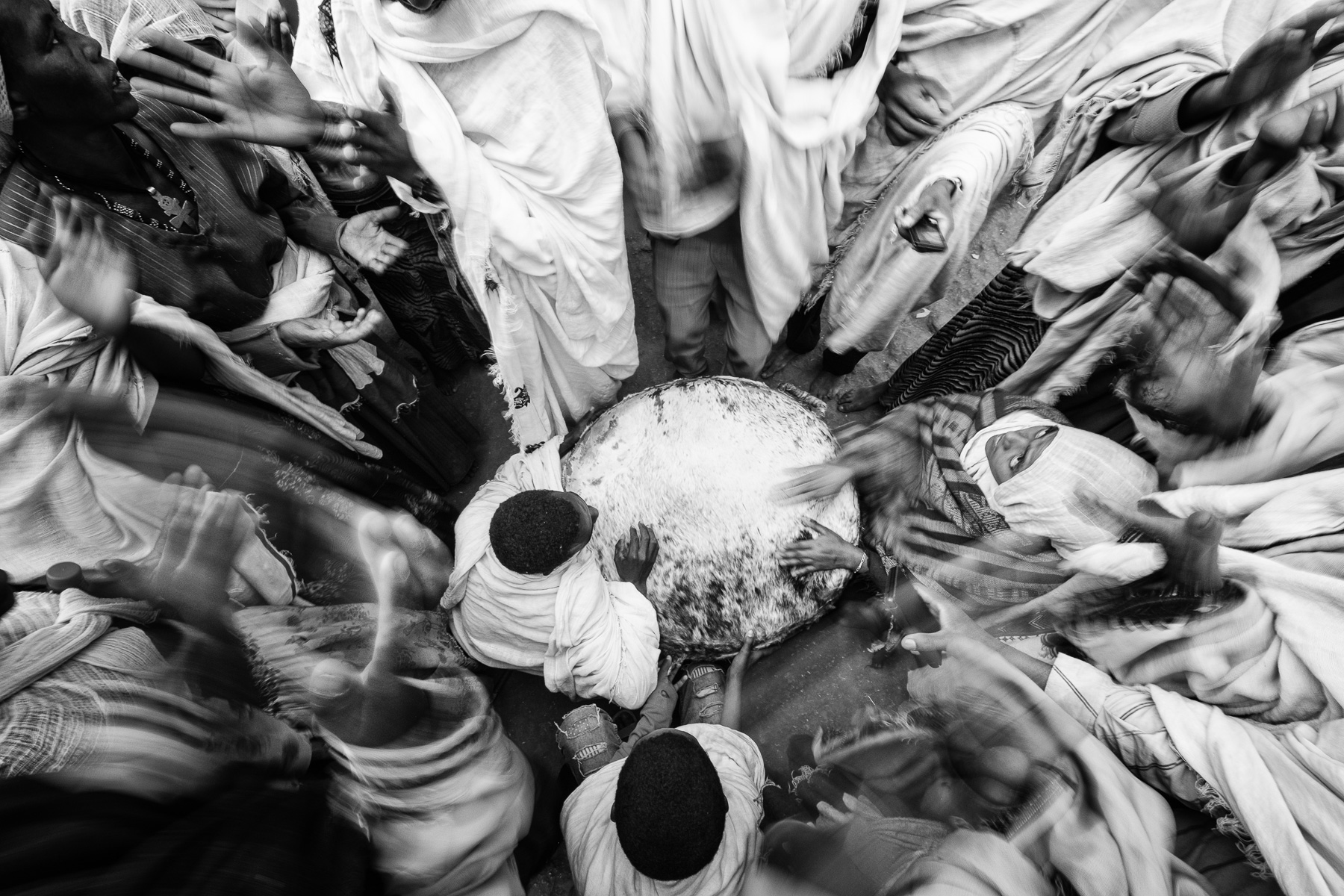
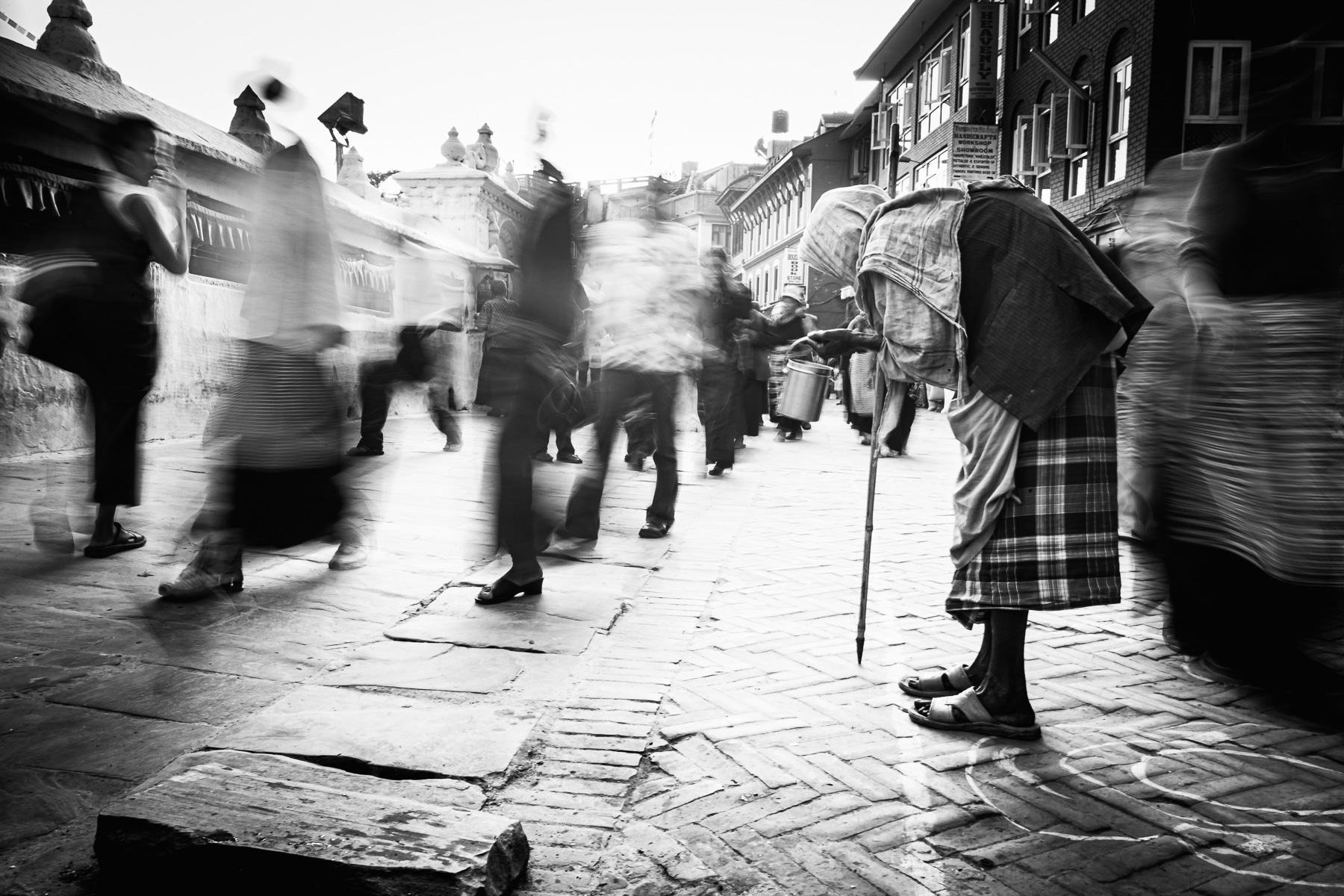
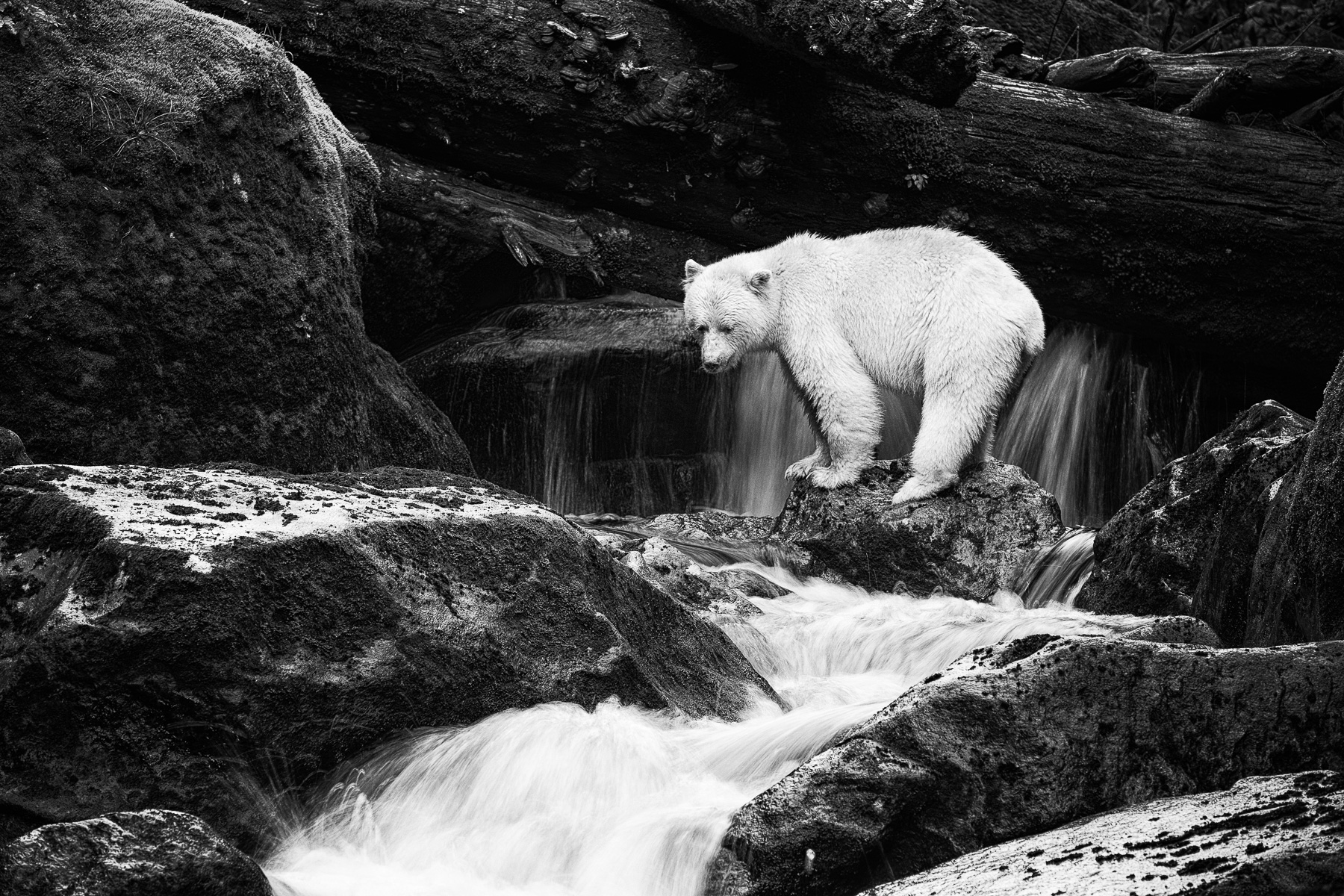
Two. Burst mode will help if you’re hand-holding the camera and want stationary elements to remain sharp but moving elements to express motion with blur. Often the frames in the middle of a burst will be sharpest when hand-holding at slower shutter speeds. Mirrorless cameras can help with this as well because there is no movement or slap of the mirror that an SLR has, and mashing the camera to your face or your body can keep the camera more stable. Holding it against a lamp post or tree or on top of a bench works too, assuming it doesn’t compromise your composition. You could also use a tripod, of course.

Three. A moving subject and a stationary camera with a slower shutter speed are only one way to show motion. Moving the camera with the subject can also create this same sense of motion and is useful when you don’t want the subject turned into an indistinguishable blur. This is called panning (see below) and the best tip I can give you for this is to go stand on a corner and practice with moving cars and pedestrians. Setting your exposure manually or with shutter priority mode to one specific shutter speed might help. Try 1/30, 1/15/ 1/8, and 1/4. What works best for which subjects? You’ll find the tricky part is just matching your speed to the speed of the subject, but this comes with practice and some luck.
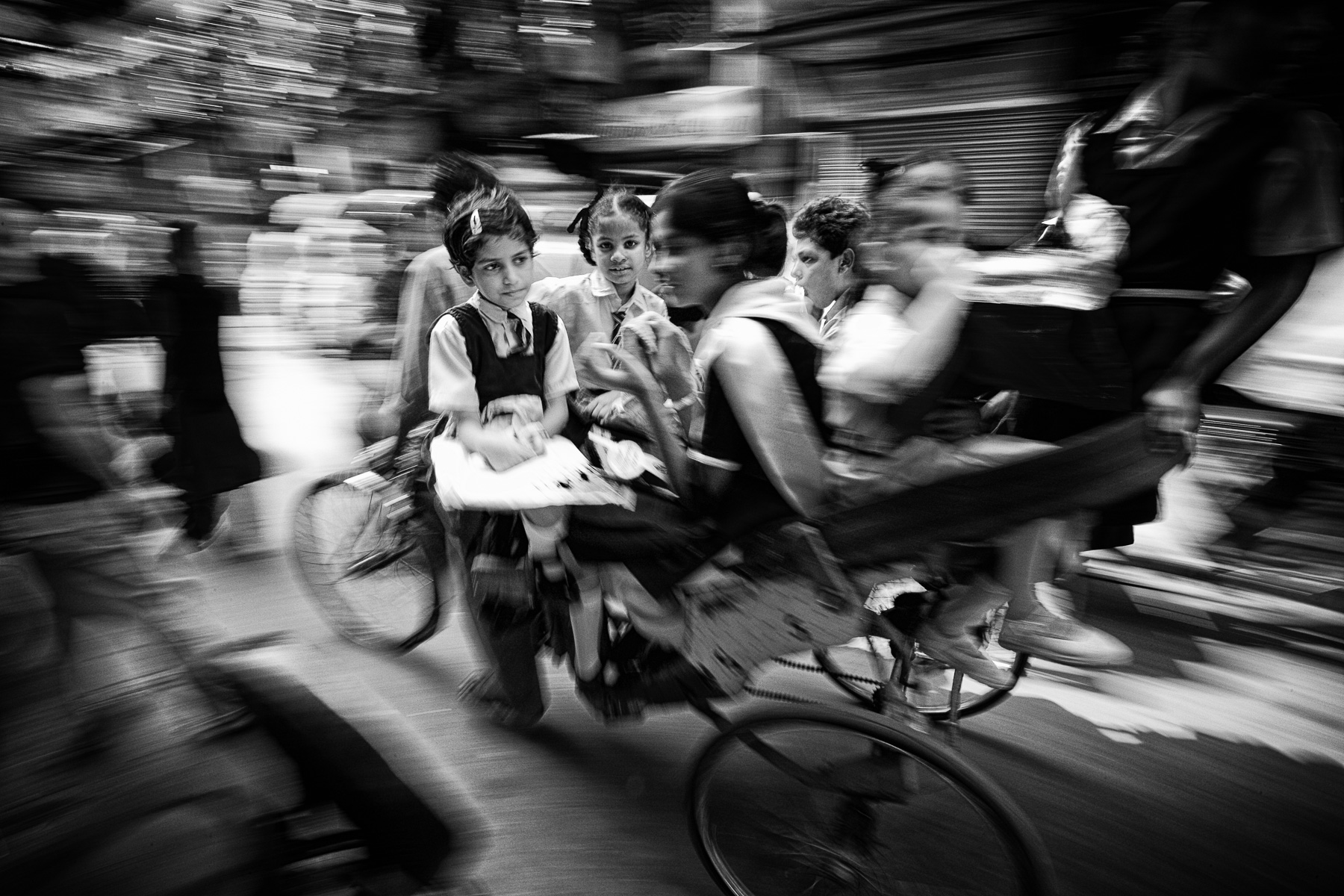
Four. Want to take this up a level? Try active panning. I’m not sure that’s an actual term, but it’s what I call it when the subject is moving and I am too, rather than just standing in one place and moving the camera. The image below is a good example of that. I moved with the subject, trying my best to keep my composition strong and not trip over anything.
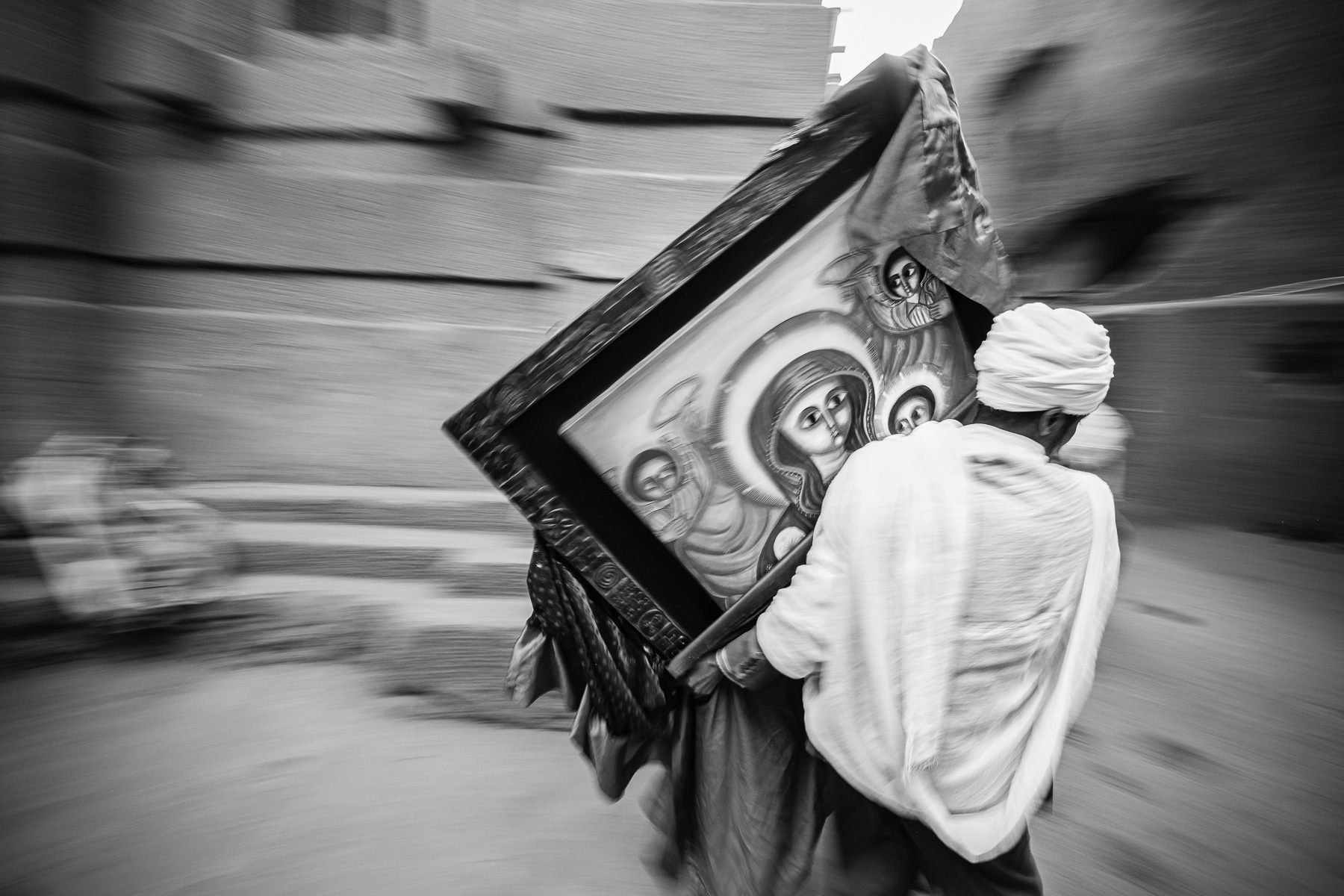
Five. Experiment, experiment, experiment. There are so many variables with this, but I’ve discovered that some of my best results have come from the total Hail Mary passes. This article isn’t really about teaching you how to add motion to your images; rather, it’s intended to encourage you to see what works best for you. I’ve added some of my favourites below.
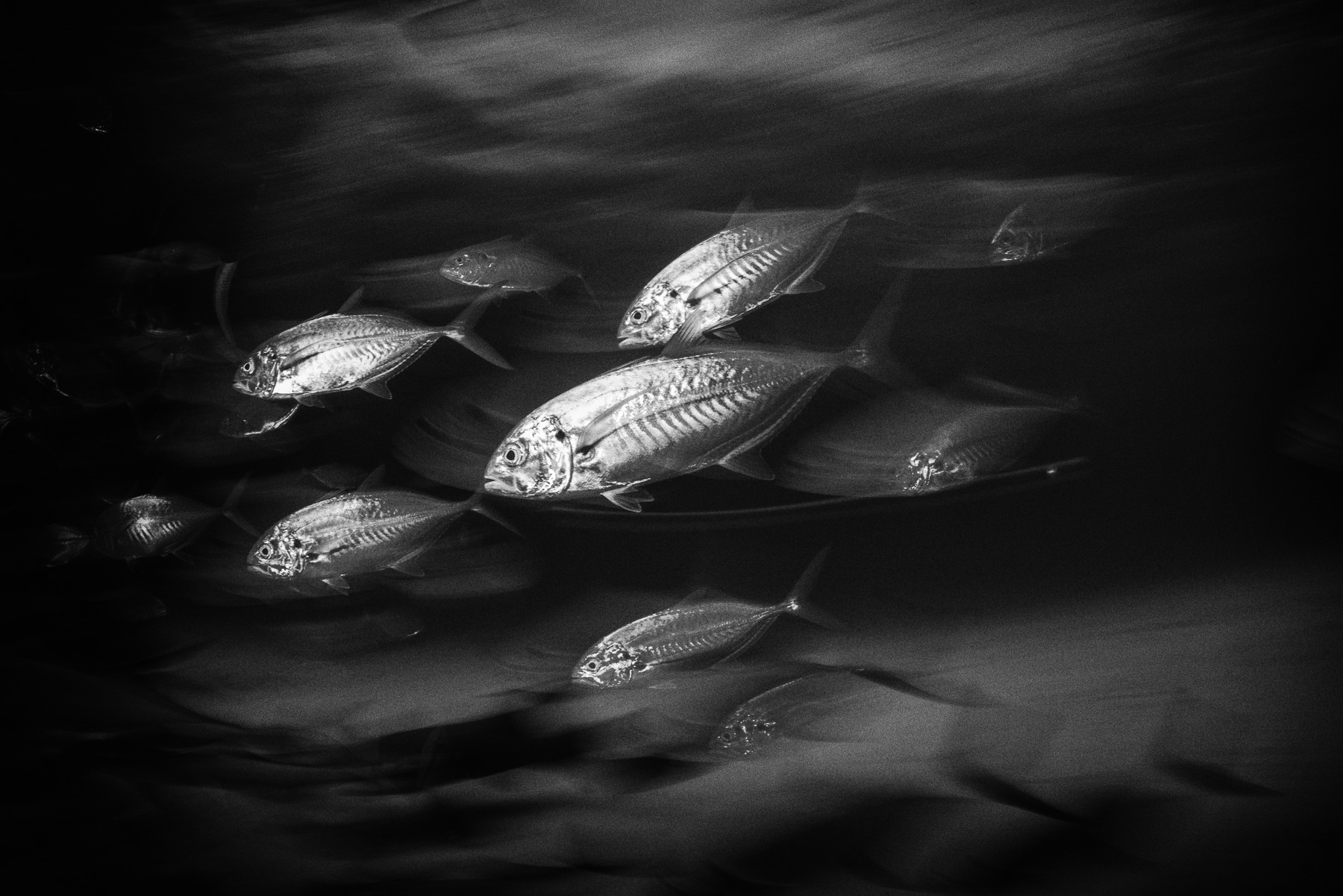
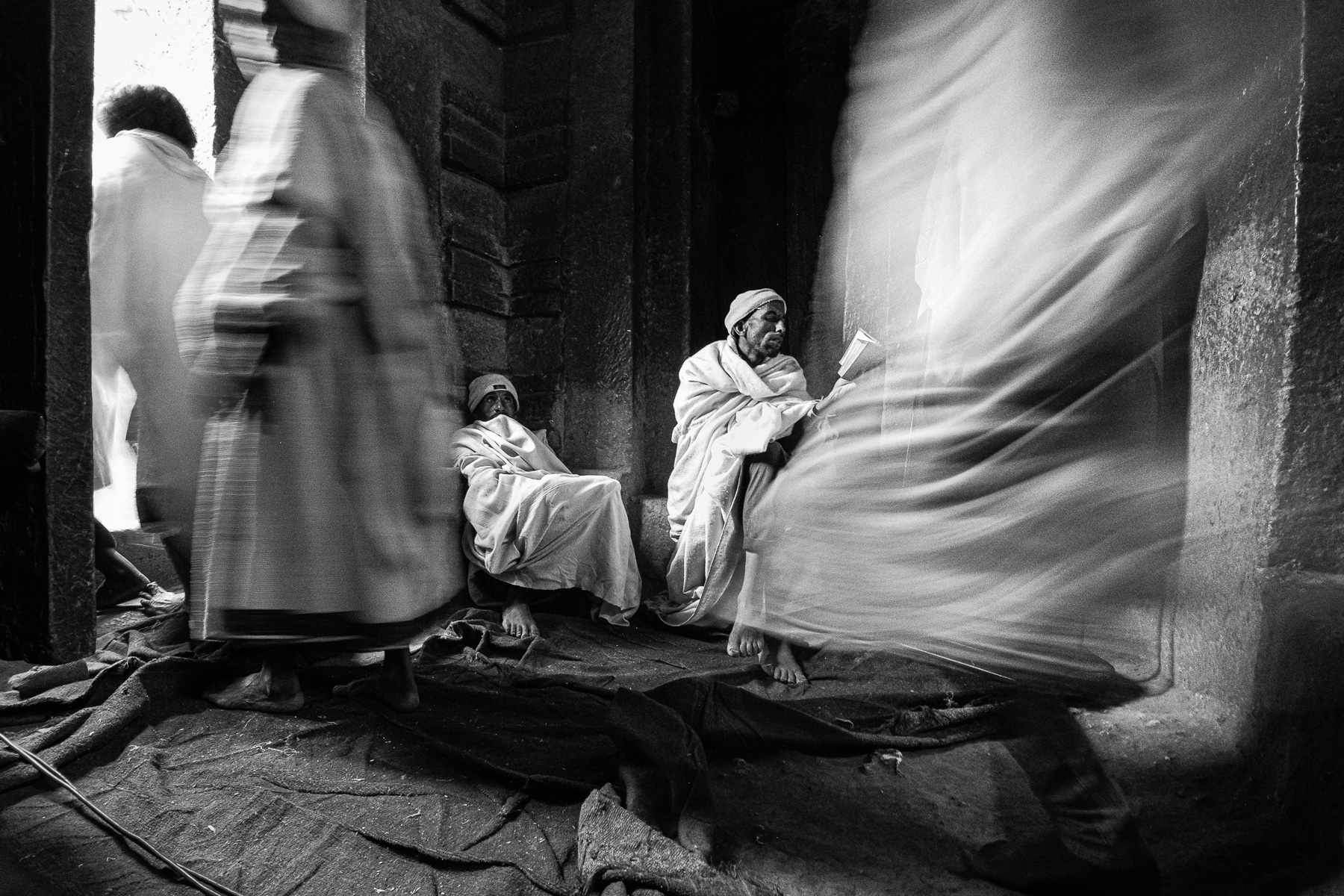
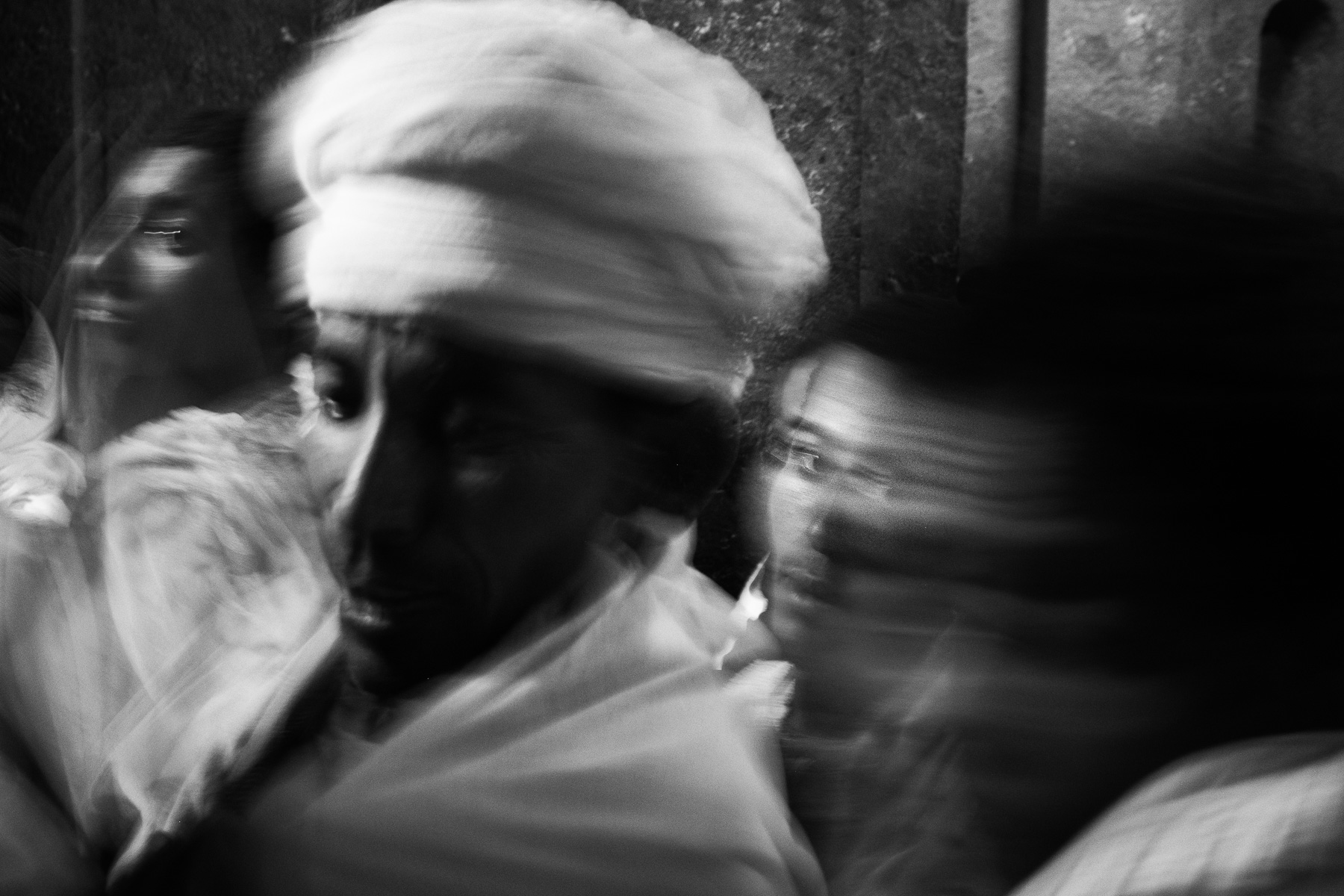
I’ve been writing recently about making images that feel more poetic. Adding a feeling of motion is one way to do that. Start playing with the slower shutter speeds, then combine the motion of the scene with your own motion and see what happens. If this was helpful to you I’d love to hear it. If it raises questions, I’d be delighted to hear those as well and see if I can help.
Motion is just one of the things that can make an image really work. There are so many others. On April 18 I will be opening enrollment in my ImageWork and ImageStory courses – just for one week – so that those who are new to my audience since last year have a chance to take what I consider to be the 2 best courses I’ve made. So that I don’t overwhelm everyone, I won’t be emailing you if you already heard about these courses in September. If you do want to know more about the course, please go to ImageWorkCourse.com and put your name on the waitlist. That’ll be my cue to include you in this.
For the Love of The Photograph,
David
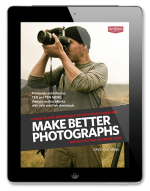
PS – Want more like this? I send these articles out every two weeks to photographers around the world who want to improve their craft and explore their creativity and I’d love to include you. Tell me where to send it and I’ll send you a copy of my best-selling eBook Make Better Photographs, as well bi-weekly articles, first-glimpse monographs of my new work, and very occasional news of resources to help you keep moving forward in this craft we love.
“Each and every one of your emails inspire and motivate me to want to jump right out of my chair away from my computer and shoot for the love of it . Thank you David.” – Millie Brown


Comments
thanks david
Motion gives the feeling of being alive and moving to the photo
Love these series of motion photos, especially the kids in the rickshaw. Awesome.
That’s what I was looking for. Inspiration! I dedicate this year to try new photographic ideas and this will be my next step. Thanks:)
Good post and thanks for sharing this ideas and keep posting.
I am a hobbyist that discovered photography only a little more than a year ago.
I have accidentally stumbled on this blog a few days ago and I must say I have been ready a few articles every morning with a cup of coffee. It has made me realize that I was missing out on so many layers of creativity prior to reading only a few articles, I can’t imagine what I can discover reading all of them!
I was always stuck in my mind with the thoughts “Oh no, my shutter speed is so slow, I don’t think I can handhold this!”. But now I can think of it as an advantage. It has opened my eyes in many new ways, thank you for the pleasant read!
After reading this post previously, today I went out to take some photos and I was consciously thinking about ways I could add the feeling of motion to my photos. I don’t think that I actually accomplished it today, but it felt good to be trying on something new and thinking about and visualizing my potential images differently today.
Kyle Reynolds
https://krnaturalphoto.com/
Great post! Slow shutter speeds work really well with dancers too – if you get it right you get to see more of the curve followed by the hands, for example, which tend to be moving much faster than the body.
I love that, Paul. Dancers would be exactly the kind of subject where the poetry of the motion should be expressed more than frozen.
One of the things I love most David is the fact that you talk about how many frames it takes you to get that one shot you consider a success. I think people assume you luck into it – but it’s perseverance and being willing to fail over and over. This is so helpful!
I am so glad, Aimee. I will never understand why artists become precious about the process and act like it’s not just a hard (but enjoyable) slog through many iterations and failed attempts. Sketch away!
I am struggling to find the right amount of motion. I guess it’s a thing of practice?
However, you truly figured it out!
Exactly, Sebastian – lots and lots of practice (and play) . You’ll find your sweet spot with time. Enjoy the practice!
This article has me thinking about how I portray motion in my photography. When I photograph a race, I often try to capture the runners frozen and sharp. I have recently started toying with adding some motion blur from time to time but I haven’t committed to it. I like using motion to capture moving water or leaves and plants blowing in the wind. I have even begun to embrace motion blur in photos of scenery that I take while I am running. It is really interesting to see how a static image of a forest with a trail through it when some of the trees etc are blurry from motion but the trail or other aspects of the image remain in focus. This article inspires me to work more towards being open to experimenting with motion in my photography. Thanks.
Kyle Reynolds
https://krnaturalphoto.com/
You’re welcome, Kyle. Slowed shutters and the feeling of motion are just one device and like anything they aren’t always the right tool for the job, but as long as you know how to use the tool you’ll be able to use it when you need to. Keep experimenting!
Thanks for sharing this David. I was just looking at the work of Nick Nichols and how he uses motion for some of his wildlife photographs. Love the energy and spirit of conveying motion. This article is a great resource and plan on printing it out to keep with my notes.
Yes, Dan! Nick Nichols is a great example of a photographer who does this well. I love his work.
I sat down to continue my reading of The Heart of a Photograph, and got waylaid by this good article, which could easily just be the next chapter in the book!
Thanks, Sandy! It’s nice to hear that if you’re going to be distracted from what I wrote for you then it’s by something else I wrote for you. 🙂
I really like this post on motion, one of your best. It got my mind thinking about how to move on to more interesting challenges.
Thank you, Robert. Glad to help.
I appreciate this week’s content as I’ve been playing with creating wildlife images that go beyond documentary and in particular with birds I’ve been trying to introduce motion. A true challenge as they are not very receptive to taking direction, but I’ve made a few that I like and I feel they tell more of a story than simply a tack sharp image of a bird. Now panning is something I need to start experimenting with.
“A true challenge as they are not very receptive to taking direction” Ha! Isn’t that the case! I’ve been playing with panning and motion blur in my safari photography for years – a heck of a learning curve and so-called failure rate (I prefer to think of it as a learning rate. A really, really slow learning rate!) 🙂
Love these images – been following you for years now! I recently completed a three year project photographing Orthodox Christian monasteries in North America (book coming soon!). Experimenting with slow shutter speeds during the church services, I fell in love with the combination of blur and control I had by using a monopod, slow-shutter speed, and panning. Sometimes the blur of the background is in the shape of a gentle arc, with the priest sharp as I pan to track his movement. All this was wayyy outside my comfort zone, but yielded some powerful images.
Thanks, Ralph. If you see this and it’s available publicly somewhere I’d love you to reply with a link so we can see that Monastery project.
Great images, like them all but the “fish,” blow me away.
Thanks, Tom!
I absolutely adore motion in photos and these images are so moving and just spectacular, David. The old lady hunched over on the side of the street is one of my all time favorites, but there are so many incredible ones in this collection. “If there’s motion, we should feel it. ” love this new rule! (and the honey one … I’ve had slivovitz in Serbia so I completely can relate to how that would seem like a good idea at the time. 🙂
“I’ve had slivovitz in Serbia so I completely can relate to how that would seem like a good idea at the time. ” LOL. Yeah. The slivovitz kind of sneaks up you doesn’t it? Thanks for the note, Kelly!
David, I know this is not related to the topic of your post but you brought it up!
A short honey story. We had a couple of hives and gave honey to our friends. My dad was driving his truck, my brother sitting in the passenger seat. He had a glass quart of honey up on the dash and another in his lap. A quicker than normal take off resulted in the quart on the dash rolling off into my brother’s lap. The end result was half a gallon of honey and two shattered glass jars in my brother’s lap. We laughed about that for years. Great post, and informative, as usual.
Thanks for that, John. It sure made me laugh. Glad I’m not the only one! 😉
Honey in the bag. I can’t even imagine. Funny, I never think to use my tripod for moving images. Especially when you mentioned having the tripod engaged for the gondola shot. It makes perfectly good sense, but I am always loathe to try to set that up in such a situation. Maybe time to get over that. Thanks for making me think new thoughts.
Yeah, I’m not always the sharpest tool in the shed. As for the gondola, it helps to have a plan and to explain it ahead of time to the people you’re working with (in this case the gondolier) – I don’t use a tripod much, but if you don’t bring it you can’t use it and if you do bring it you’ll feel you have to and at some point you’ll hit gold with it.